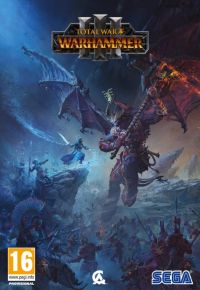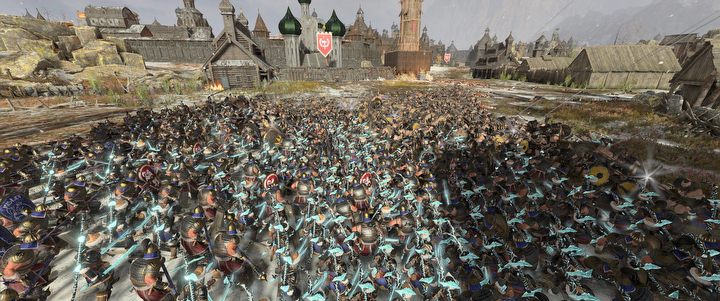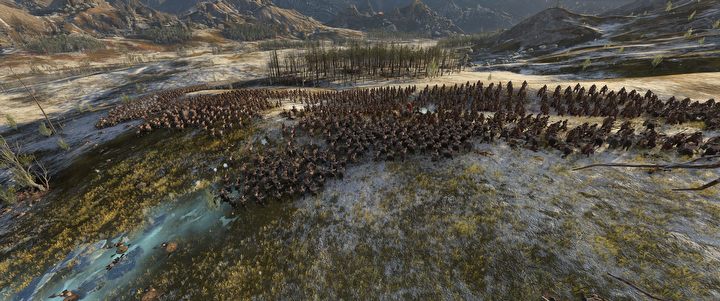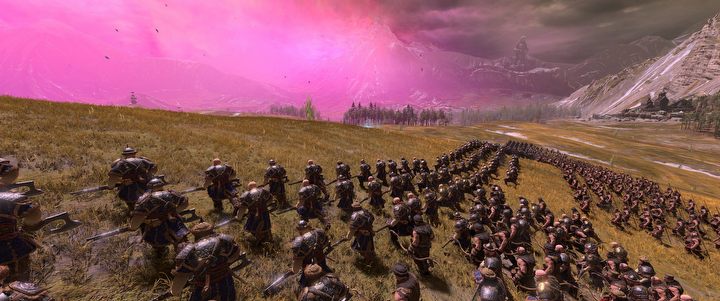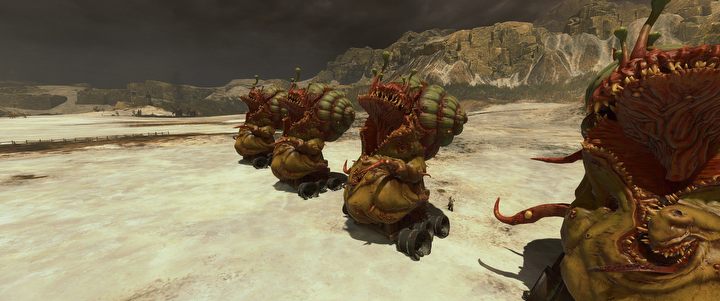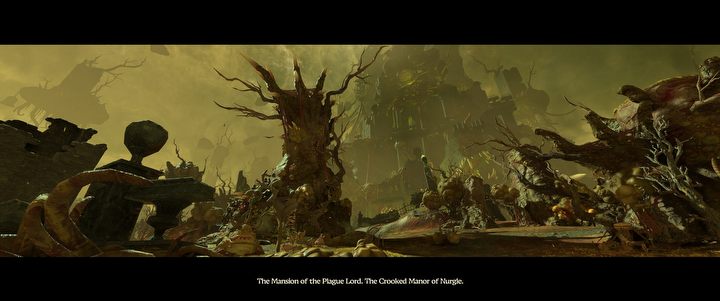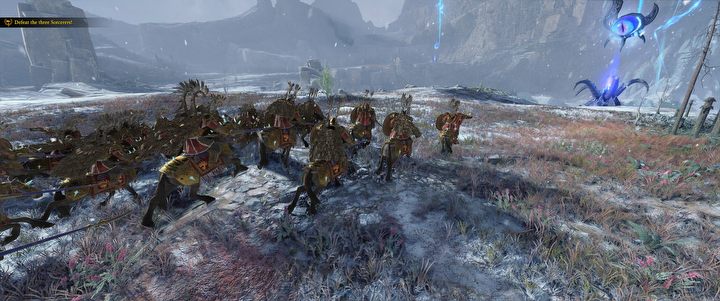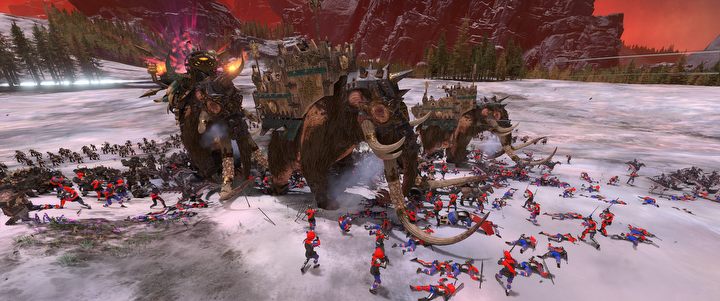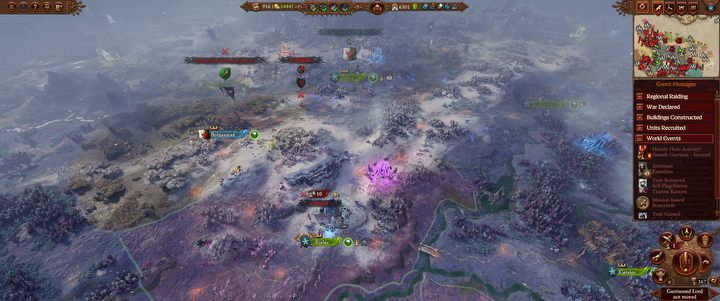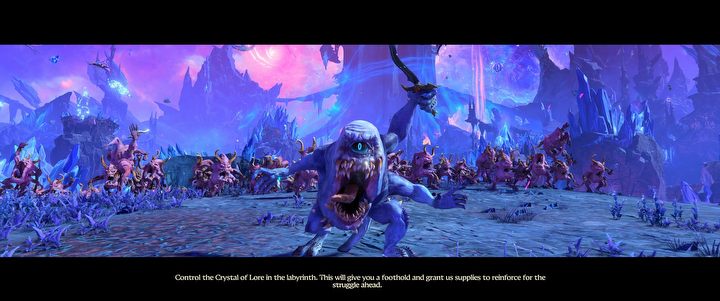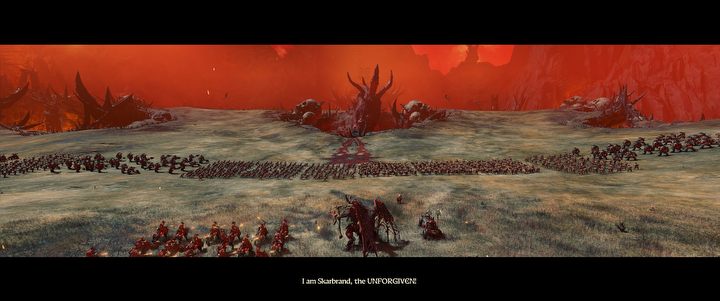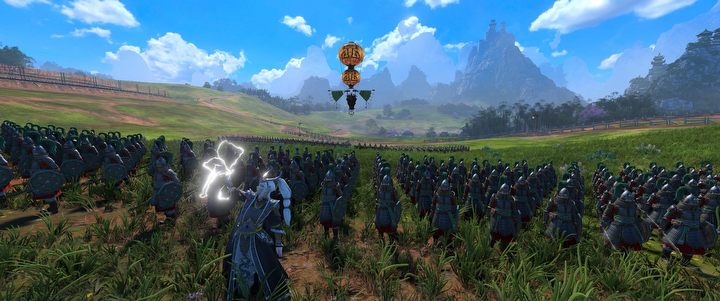Total War: Warhammer 3 Review - Quality of War
Five years. That's how long we waited for Total War: Warhammer 3. Creative Assembly have taken much more time with the development than anyone anticipated. This time was not squandered.
The review is based on the PC version.
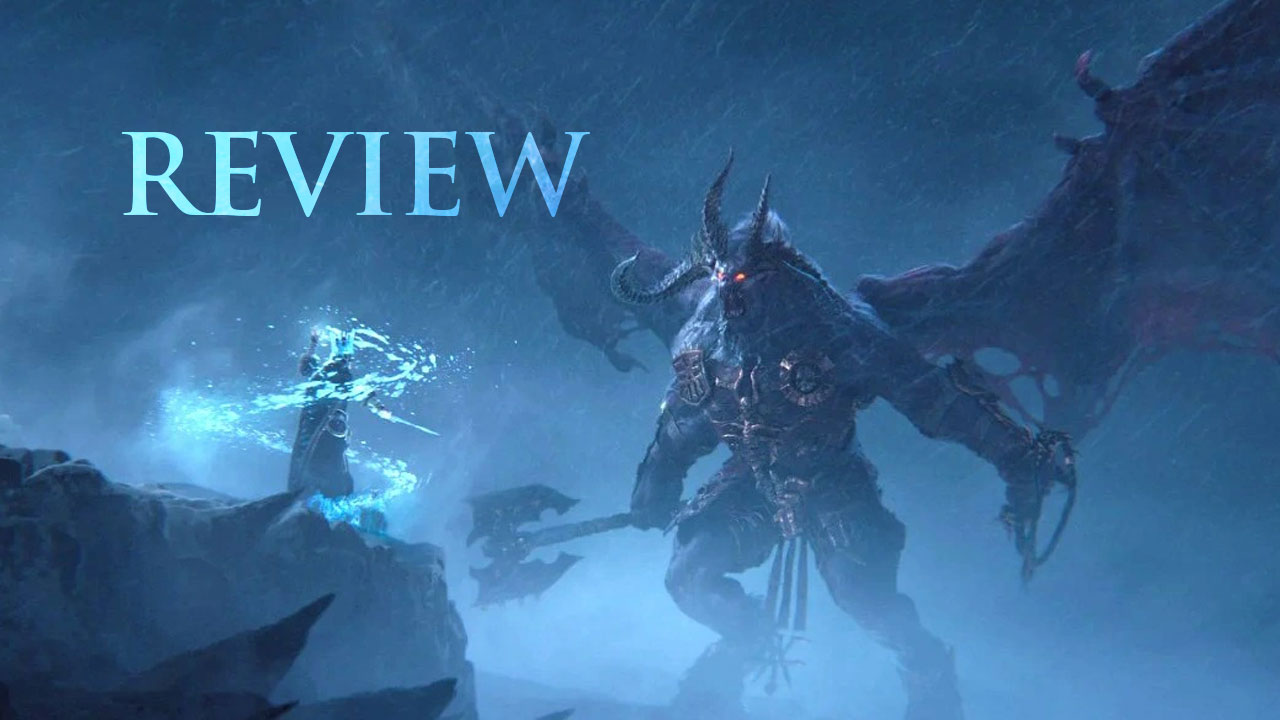
"God is dead," says Total War: Warhammer 3. One of the most anticipated games of this year, whose task of following up the phenomenal Total War: Warhammer 2. So let's get this straight right away: Warhammer 3 is a fantastic ending of an amazing trilogy that we'll keep playing for years to come. And if a god had to die along the way, well, too bad – luckily, the roster is full of gods in the third part.
Yes, it worked and the beloved series gets another great installment filled to the brim with content – it will suffice not for tens, but hundreds of hours, and in a year it can easily become a game for thousands. I'm also sure there's plenty of people who'll spend the coming months on waging digital wars in the dark fantasy universe, playing through each new DLC, fighting countless enemies online. The people of Creative Assembly have not only expanded the solutions from the previous parts, but, above all, re-created the platform for future adventures and battles – the game will be supported for many years to come with free and paid extras.
- Great quality-of-life improvements;
- Reworked diplomacy is pretty enjoyable;
- Tons of cool, new factions including gods of chaos;
- New map is beautiful;
- New battle locations are even better;
- Detailed units, perfect vibe.
- Hero spamming still applies;
- Role-playing tower defense battles are a bit irritating;
- Paid censorship continues – to see blood you have to buy DLC...
It's funny because I can remember people bemoaning Total War: Warhammer in 2016, demanding another realistic, historical part based on the events of the real world, rather than elves and dragons. Meanwhile, the elves and dragons have become the crown jewel of the franchise, producing the most diverse and fun Total War game ever. Think this is the best thing that could have happened to the series, and Warhammer 3 is the final proof.
Quality of… War
Creative Assembly adopted a strategy of evolution instead of revolution – nothing has been turned upside down, it's still the same, pampered Total War, but the third part shines especially bright at moments that were frustrating the last time around. The creators focused on many issues both in the campaign and combat, adding small, quality-of-life improvements.
Some of them are tiny miracles of design that make you wonder why they didn't exist before. For example, after each battle is over, the game allows us to repeat it. You no longer need to suffer the humiliation of defeat, loading a save game and reloading the battle – just a single click and you're good to go again.
Another trifle is, for example, the health bar of our units. The so-called lazy health bars allow you to see how much of a beating our units get – the bar doesn't run out immediately, but leaves a visible trace when it decreases. This way, it's easy to judge if a unit has just taken a lot of damage and should be withdrawn from the battle, or whether the losses were sustained in a more continuous manner.
There are many more such details (you can finally ground the flying units, forcing them to march, which opens up new tactical opportunities), and you will find them both on the campaign map and during battles. One of the biggest changes, however, was diplomacy.
A little more diplomacy
Similarly it has not been completely reworked, but extended with additional functionalities. Diplomacy in Total War: Warhammer 3 is still a means to start a world war, earn some extra money from trade and at least temporarily stop an attack from 10 fronts at the same time. This is not Civilization, so don't count on big politics, because the name of the game – Total War – obliges, so you will soon be waging an all-out war against anyone who looks different than you, but I'm glad that so much effort was invested into curbing all the irritating things from Warhammer 2.
For example, the possibility of trading in settlements has been added. This is a small feature, the lack of which used to drive me crazy. In part two, when we were occupying 3 out of 4 cities in a province and the fourth belonged to ally, they only way to get the bonuses from complete province ownership was starting another war, and a traitorous at that. This time, we have the ability to simply purchase such settlement, this sparing ourselves the indignity of stabbing allies in the back.
The military alliances and defense agreements, while still the fastest way to declare war on literally everyone on the map, have also been improved. Now the allies can, for example, defend our cities. Well, we can even "borrow" (for currency, the so-called Allegiance points, which we get by completing quests for allies) their army! In addition, in the capitals of our allies, we can build outposts that give us bonuses in their areas, as well as allow us to recruit their units, also from another faction. Thus, for example, while playing as Kislev, you can have Imperial units in your army.
If, on the other hand, a neutral army enters your territory, pay attention to the small icon above its avatar – this way you can draw the attention of another faction that it has entered your territory, where it is not welcome. There's also a... button for balancing offers. So if the neutral faction tries to involve you in the alliance, offering you 300 gold in return, all you need to do is click the button and the game will even out the profit and loss balance (and thus the opponent will have to pay you 3k gold, for example).
The Slavs invade China
Of course, all the minor and major changes, while significant, are not the most important here. What excited the players the most after the first materials from the game were, above all, the new factions. If you're expecting CA to cut a chunk of content from the game to make some money later on separate DLCs, let me reassure you. There's plenty to do and there are many factions right off the bat. In the campaign, we will have to fight previously unknown factions such as Kislev (as many as 3 legendary lords, including one hidden to be unlocked), Cathay (two lords), the Ogre Kingdom (two lords), 4 long-awaited factions of great Chaos Gods (Khorne, Nurgle, Slaanesh and Tzeentch – one lord each) and the campaign of the Daemons of Chaos faction (mixing units from other chaos factions). In addition, before you start the main course, the creators have prepared a story-driven prologue in which we play the role of the prince of Kislev. I recommend going through this prologue, because although it is quite annoying at to,es, it sets the plot of Warhammer 3 up (using a trail well-known to World of Warcraft fans – the prologue is in fact a story about Warhammer Arthas).
Each of these factions, of course, looks, acts, fights, and plays differently. The differences are huge – just as in the previous Warhammers. Kislev – the faction chosen by the Creative Assembly as the "introductory" faction (similarly to the High Elves from Warhammer 2), is a strange variation on the notions of Slavicness – so you will find here motifs from the Slavonic cultures of Russia, Poland, Belarus and Ukraine (hussar riding great white bears? Perfect!). Interestingly, it's not as easy to play as the high elves. Almost all infantry units in the Kislev roster are hybrids – armed with both ranged and melee weapons – which for a beginner can have a lot of trouble deciding what the hell to put on the front line ?! Nevertheless, I recommend starting your adventure with Warhammer 3 from this faction – Tzarina Katarin of Kislev is great and watching the bear charge is addictive.
Cathay on the other hand – a faction based on the ideas of China and Asia – has a lot of firepower at a distance (including a unit of crossbowmen with shields), and unlike Kislev, flying units (balloons!) That act like artillery or even... a terracotta army. Of course, the differences in units are not finished, because Total War: Warhammer each faction also has its own gameplay mechanics. And so Kislev, for example, earns Devotion points, for which he can activate the grace of the gods, sending significant buffs to cities and armies. After gaining control over the entire province, we will be able to assign an ataman – a governor who will increase our profits. On the other hand, recruiting new lords (ice witches) is difficult, because first you have to train them, and then buy them. On the other hand, the Ogre Kingdom – as befits a faction that lives off looting – introduces a meat currency, needed to maintain our (hungry) ogres. We conquer them by looting cities and killing enemies. They can also build sites that will serve as our camps/outposts. Cathay, on the other hand, has a great trade caravan – we can send such caravans out into the world and if no one attacks it and the caravan reaches its destination, we will earn a lot of money. There are a LOT of these nuances and each faction is radically different from each other. It would take 10 pages to describe them all, so I recommend you see for yourself what the CA wizards have prepared.
A campaign for many nights
Following the solutions from Warhammer 2 and the Vortex campaign, here, all factions participating in the campaign are following a similar direction. I will not dwell on the plot here; suffice to say that Ursen, the bear god, has been imprisoned and we either want to free him or take advantage of the situation. Everyone has their own motivations, but the goal de facto forces us to compete, race against time and go in the same direction. I mention it, however, because, as in Warhammer 2, the critical moment was performing rituals, so Ursen howls from time to time, opening portals to the four lands of the gods of chaos, where we have to enter, break through hosts of enemies and get the item necessary to push the plot forward.
These lands are a great addition to the campaign map – they have been beautifully designed according to the personal, distorted taste of a given god, but also have separate mechanics. For example, in the land of god Slaanesh, we have to go through several circles of hell, and the god of debauchery will try to bribe us to refrain from further wandering, promising mountains of gold and powerful buffs. We can accept the gifts and leave the land (we will not be able to return for a while) or complete our quest of rage, getting noting in return. In the realm of Nurgle, we will constantly take damage from a disease, and in the realm of Tzeentch, we need to pair the portals to reach the end. If we stay in these corrupt lands for too long, our lord will receive debufs (and big ones!).
These four lands render the action dynamic and force us to make decisions. If we send our most powerful army to one of them, we must also take care of our cities and provinces (the game continues). Without exploring the lands, we won't reach the end of the campaign (well, we can end up killing off key factions and owning 50 cities, but it's much, much more time-consuming).
War never changes
Also in Total War: Warhammer 3. In truth, the new arenas are beautiful, and the units are designed with attention to detail (watching the Chaos Warriors of Khorne is a feast for the eyes and Warhammer 40k fans), it's still the same Total War and a bit bizarre and complicated game of rock-paper-scissors. As elsewhere, the focus is more on details as well, with the exception of sieges, where elements of, say, tower defense have been added. Our cities gather supplies, and we can spend these supplies during sieges to build walls that slow down the enemy, or towers, which will additionally support our units in combat. The gameplay doesn't differ much from what we're used to, except for the fact that now we can capture strategic points in cities (thus capture a city without killing everyone), or just – in the case of defense – collect supplies that we spend (during combat, not on the campaign map) to improve the defense of our city. All this makes sieges a little more interesting.
These mechanics are even more pronounced in the case of story battles – when we go to the aforementioned lands of the gods of chaos, we will fight huge (and long) battles with a representative of a given land there. We will take over strategic points, and then buy towers or walls, as the enemy will be attacking in waves – just like in tower defense. Interestingly, for collecting supplies during combat, we can also heal units, replenish their ammunition, buy new units (!) or even upgrade their armor and attack. And though I understand the intention of the creators, and I also appreciate that these battles contain scraps of the plot, I did not like this element of the campaign very much – these battles can last from 30 minutes to even one and a half hours, and at nights, when I wanted to play for a while before going to sleep, I had a choice: either spend the night playing or… turn the game off. Of course, we can auto-resolve battles, but... What's the point of creating new mechanics and beautiful, special arenas? Fortunately, there are only a few of these battles in the course of the game.
What a beautiful war!
Total War Warhammer 3 – surprisingly – runs better for me than the last installment did. It's true that when we discover a large piece of the map, some stuttering still happens with zoom, but I did not expect a revolution here – the map is huge (and it will be even bigger when the devs let us combine the three maps from three parts of the game...). I do not really care about it, because the game looks really beautiful on Total War. Everything from the appearance of the campaign map and diverse environments, to the incredibly crafty maps of cities and battle arenas – it's just the best we've seen so far in the Total War franchise in terms of scale, atmosphere, gameplay. And Cathay's starting locations are some of the most beautiful places where my armies have ever had the pleasure of obliterating enemy force.
Total War: Warhammer 3 is the crowning achievement of the trilogy, and a game that will likely stay with us for years to come. It’s certainly not the end of the franchise, and even if it is the last entry in the sub-series, the conclusion couldn’t have been better.
I spent far too much time watching units from close-up, participating in charges and scuffles, often losing a battle because I was too busy playing Peter Jackson. And sure, there's still room for chaos – especially if you aren't familiar with Sun Zi's Art of War and aren't one of the world's most accomplished strategists, you'll repeatedly have to look at swarm of wavering soldiers back from your god perspective of two hundred feet above the battlefield, wondering what went wrong. Still, some units tend to idle out while their comrades are getting banged around. These are the charms of Total War and a matter of a certain convention. It's a pity that in order to enjoy blood and gore, you still need to buy a separate DLC (which, by the way, has not been released yet). But again – it is what it is.
There's an amazing attention to detail – the corruption system is not only much more spectacular, but also more dangerous (our lords and heroes need skills protecting against it; there map is full of armies of chaos, and the corruption portals open up every so often, spreading additional corruption). So if your lands happen to fall under the influence of Slaanesh, the map will light up purple and pink, and slimy tentacles and maws will come out of the ground. These are the little details that further reinforce the overall perception of the game.

Our reviews are featured on Metacritic.
Total War: Warhammer 3 is a great culmination of the trilogy and a game that will probably stay with us for many years to come. This is definitely not the end of the franchise, but even if it turned out to be the last game in the sub-series, it is the perfect ending. I only spent 40 hours with the game and it's not nerealy enough to fully appreciate and understand this masterpiece. But that's more than enough to say: "They've done it." Yet another, great Total War.
Total War: Warhammer III
Total War: Warhammer 3 Review - Quality of War
Five years. That's how long we waited for Total War: Warhammer 3. Creative Assembly have taken much more time with the development than anyone anticipated. This time was not squandered.
